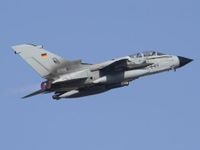As Europe faces a shifting security landscape, the continent’s defense ambitions are being tested by both internal challenges and external threats. On September 29, 2025, a swirl of developments—from the potential collapse of the Franco-German-Spanish Future Combat Air System (FCAS) to urgent calls for joint air defense against Russia—revealed the complexity and urgency of Europe’s security dilemma.
At the heart of the debate stands the FCAS program, a flagship project intended to deliver a sixth-generation airborne weapon system for Europe. Yet, as of late September, the program teeters on the brink of collapse. According to reporting from Table.Media, Greens from Germany and France have sounded the alarm, warning against abandoning FCAS without a replacement solution. Their concern is not just about preserving a single weapons system, but about the broader implications for Europe’s defense autonomy and technological edge.
This sense of urgency is echoed across the continent. The past several years have seen a dramatic transformation in Germany’s approach to defense. For decades after reunification, defense spending was something of a taboo topic in Berlin. Even after Russia’s actions in Georgia and Ukraine in 2014, strategic concerns barely rippled the policy waters. That all changed in February 2022, when the full-scale Russian invasion of Ukraine shattered old orthodoxies and set off what the Atlantic Council described as a “small revolution” in both dialogue and policy.
Germany, long reliant on the so-called “peace dividend” and the U.S. nuclear umbrella, has since embarked on building a military-industrial complex almost from scratch. The government has relaxed its constitutional debt brake, allowing defense investments up to 1 percent of GDP, with anything beyond that funded by special vehicles known as Sondervermögen. In June 2025, NATO allies—including Germany—committed to spending 5 percent of GDP on security and defense until 2035. Of that, 3.5 percent is earmarked for weapon systems and ammunition, and 1.5 percent for critical infrastructure. This represents a sea change in both scale and ambition.
Private capital is now being actively courted to help finance this defense build-up. Deutsche Bank CEO Christian Sewing captured the new mood, saying, “we need to efficiently combine public funds with private capital to finance expansion. Banks and investors are ready for this—for example, Deutsche Bank’s corresponding loan portfolio amounts to a mid-double-digit billion-euro amount.” Two high-profile events hosted by Atlantik-Brücke in Berlin have sent a clear signal that private investors are ready to channel capital into Germany’s defense capabilities. It’s a major shift: the government now relies on private funding to uphold its national security obligations.
But money alone won’t solve Europe’s defense woes. The patchwork of national procurement has long undermined efficiency and interoperability. Jiří Šedivý, chief executive of the European Defence Agency, told industry leaders in February 2025 that “the European defence base remains fragmented” and urged more cooperation to create economies of scale. Responding to this challenge, the European Commission created the SAFE (Security Action for Europe) program, offering €150 billion in long-maturity loans to support joint procurement and projects involving multiple member states, as well as Ukraine and EEA-EFTA countries. Commissioner Andrius Kubilius, the EU’s first-ever defense commissioner, called in November 2024 for a “Big Bang” approach to unify procurement by 2030. Yet, whether SAFE can deliver on its promise remains to be seen.
Meanwhile, the economic context is sobering. Germany’s economy shrank by 0.3 percentage points in the second quarter of 2025 compared to the first, and major institutes predict little to no growth for the year. The government hopes that defense investments—alongside €500 billion in infrastructure and climate protection spending—will help spark a long-awaited economic revival. German industry, renowned for its automotive and engineering prowess, is being called upon to pivot toward defense technologies of the future, from drones to advanced tanks. European Commission President Ursula von der Leyen has described the effort to bolster Ukraine’s deterrence as building Europe’s “steel porcupine.”
The sense of urgency is not limited to economic or industrial policy. On the alliance’s eastern flank, Russian airspace incursions have set nerves on edge. According to Reuters, NATO leaders say that Russia has been testing the alliance’s readiness with incursions into Poland and the Baltic states. In response, Ukrainian President Volodymyr Zelenskiy, speaking to the Warsaw Security Forum on September 29, proposed building a joint air defense shield with Poland and other European allies. “Ukraine proposes to Poland and all our partners to build a joint, fully reliable shield against Russian aerial threats,” Zelenskiy declared. “This is possible. Ukraine can counter all kinds of Russian drones and missiles and if we act together in the region we will have enough weapons and production capacity.”
Ukraine has also offered to train Polish troops on drone countermeasures, and Romania is partnering with Ukraine to build drones under the new EU defense funding mechanism. The idea of a “drone wall” along NATO’s eastern flank has gained traction, with advanced detection, tracking, and interception capabilities envisioned. Polish Defence Minister Wladyslaw Kosiniak-Kamysz emphasized the importance of Ukrainian participation, cautioning that without such cooperation, “we will have dangerous spaces, we will have gaps in the air, missile and anti-drone defence systems.”
Yet, as German Defence Minister Boris Pistorius warned, establishing a comprehensive drone wall will take years. “We’re not talking about a concept that will be realised within the next three or four years,” he said at the Warsaw Security Forum. “We need to prioritise, and recognise that we require more capabilities and capacities than previously described.” Pistorius has also introduced the term Kriegstüchtigkeit, or “war readiness,” to describe the new posture of the German military—a striking departure from the country’s previous stance.
All these efforts play out against a backdrop of both hope and frustration. The political will for a stronger European defense is evident, and the private sector is eager to contribute. But the hard work of aligning national interests, streamlining procurement, and delivering real capabilities is only just beginning. The FCAS crisis, the scramble for joint air defense, and the economic stakes all underscore a single reality: Europe’s security future will be determined not just by ambition, but by its ability to turn plans into action—together.

